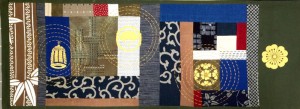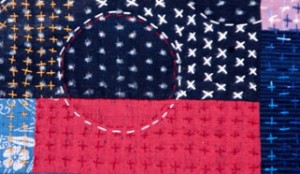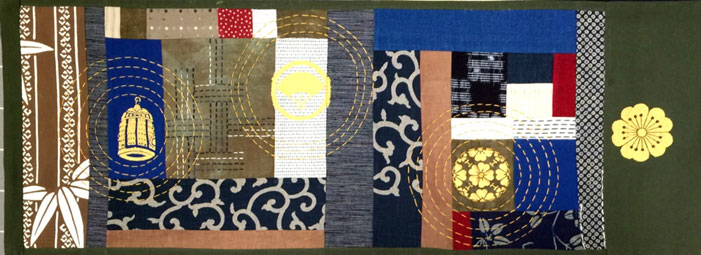Immerse yourself into the gentle Japanese Mingei slow stitch movement. Hand print yourself tenagui fabrics to include with Japanese hand-stitching techniques; Sashiko,  Boro and Chiku chiku that will create little free form textiles panels suitable for use in bags, a table runner or jackets. Participants can choose a kit and recreate Mingei style textiles using Japanese sourced fabrics,
Boro and Chiku chiku that will create little free form textiles panels suitable for use in bags, a table runner or jackets. Participants can choose a kit and recreate Mingei style textiles using Japanese sourced fabrics,  including Tenagui, Yukata, indigo fabric, Kasuri and woven commercial fabrics. A regular visitor to Japan, Julie will share a little about Mingei; the rural folk textiles of the early 20th century Japan while her students stitch and create.
including Tenagui, Yukata, indigo fabric, Kasuri and woven commercial fabrics. A regular visitor to Japan, Julie will share a little about Mingei; the rural folk textiles of the early 20th century Japan while her students stitch and create.
If students would like to create their own indigo shibori fabrics, an extra day is required. This dye technique is lots of fun. .
 Participants can choose a kit and recreate Mingei style textiles using all Japanese fabrics, including Tenagui, Yukata, indigo fabric, Kasuri and woven commercial fabrics. A regular visitor to Japan, Julie will share a little about the rural folk textiles, the culture and some photos of the early 20th century Japan called Mingei while her classes stitch, print and create.
Participants can choose a kit and recreate Mingei style textiles using all Japanese fabrics, including Tenagui, Yukata, indigo fabric, Kasuri and woven commercial fabrics. A regular visitor to Japan, Julie will share a little about the rural folk textiles, the culture and some photos of the early 20th century Japan called Mingei while her classes stitch, print and create.
|

